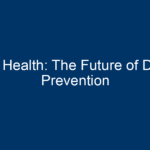In today’s dynamic educational landscape, the integration of technology has become paramount. Among the myriad innovations shaping modern learning, Open Educational Resources (OER) stand out as a powerful tool for enhancing educational access, equity, and quality. This article dives deep into how OER is unlocking the future of education technology, transforming the way learners access information, collaborate, and develop skills.
Understanding OER: An Overview
Open Educational Resources, or OER, refer to freely accessible, openly licensed materials that are useful for teaching, learning, and research. OER may include textbooks, lecture notes, quizzes, assignments, and even entire courses. The key attributes of OER are their accessibility and adaptability, empowering educators to customize resources to suit diverse learning needs.
The History and Evolution of OER
The concept of OER emerged in the late 1990s when educational institutions sought to create more inclusive learning environments. The 2002 UNESCO Forum on Open Courseware played a pivotal role in mainstreaming OER. As technology evolved, so did the potential of these resources. Today, the rise of the internet and educational technology platforms has exponentially increased the availability and utilization of OER.
The Benefits of OER for Educators and Students
OER provides numerous benefits for both educators and students, contributing to more effective learning experiences and improved educational outcomes.
1. Cost-Effectiveness
One of the most significant advantages of OER is its cost-effectiveness. Traditional educational resources often come with high price tags, making quality education inaccessible for many. OER eliminates these financial barriers, enabling students to access high-quality learning materials for free. This accessibility helps mitigate the burden of student debt, allowing learners to focus on their studies rather than financial constraints.
2. Customization and Flexibility
With OER, educators have the freedom to modify and adapt materials to better suit their teaching styles and their students’ learning needs. This flexibility ensures that resources are relevant, engaging, and aligned with current educational standards. As a result, teachers can foster more personalized learning experiences, addressing diverse student backgrounds and learning preferences.
3. Collaborative Learning and Community Engagement
OER promotes collaborative learning not just among students but also among educators. Teachers can share their experiences, insights, and adaptations of OER, creating a rich, collaborative environment. This community-driven approach encourages collective innovation and elevates teaching practices, ultimately benefiting students.
4. Enhanced Learning Outcomes
Research has shown that the use of OER can lead to improved learning outcomes. By providing diverse and accessible resources, OER enhances student engagement and understanding. When students can interact with materials that resonate with them, they are more likely to invest in their learning journey.
How OER is Integrating with Education Technology
The integration of OER with education technology is propelling education into a new era. As digital platforms evolve, they increasingly incorporate OER into their offerings, making it easier for instructors and students to access these valuable resources.
Learning Management Systems (LMS)
Many Learning Management Systems are now embedding OER within their platforms. This allows educators to integrate OER directly into their course materials, providing seamless access for students. As a result, users can access a wide range of OER without navigating to multiple sources, enhancing the user experience and streamlining educational processes.
Adaptive Learning Technologies
Adaptive learning technologies have gained traction in recent years, and they pair beautifully with OER. By using OER as the foundation for adaptive learning systems, educators can customize curricula that cater specifically to individual student needs. This personalization maximizes learning efficiency and fosters better understanding among learners.
Gamification and OER
The gamification of education is another trend that is making waves in the field of education technology. OER can be adapted into game-like structures, making learning more interactive and enjoyable. By incorporating elements such as points, badges, and leaderboards, educators can motivate students to engage with OER in innovative ways.
Challenges of Implementing OER
While the benefits of OER are numerous, there are also challenges that need to be addressed for its widespread adoption.
1. Awareness and Advocacy
Many educators and institutions remain unaware of the potential of OER. Building awareness is crucial for promoting OER’s utilization. Advocacy efforts, such as professional development workshops, can help spread the word about the impact of OER on teaching and learning, encouraging more educators to embrace these resources.
2. Quality Control
The open nature of OER contributes to a vast and varied pool of resources, but not every resource is created equal. Educators must be equipped to evaluate the quality of OER effectively. Establishing reliable review mechanisms and guiding frameworks can help educators discern between high-quality and subpar resources.
3. Intellectual Property Concerns
Navigating the legal aspects of OER can be tricky. Although OER are designed to be freely shared, issues concerning copyright and licensing must be understood and respected. Educators need training to navigate these regulations, ensuring that they are compliant while freely using and sharing OER.
The Future of OER and Education Technology
As we look ahead, OER will likely become more intertwined with education technology, enabling unprecedented levels of access and customization in learning.
Predictions for OER in the Next Decade
-
Increased Institutional Support: Universities and colleges are becoming more supportive of OER initiatives. Investments in OER projects and collaboration among institutions will likely rise.
-
Growing User-Generated Content: As more educators become OER evangelists, we can expect a surge in user-generated content. Collaborative platforms will empower educators to create and share resources at an unprecedented scale.
- Enhanced Data Analytics: The integration of data analytics in OER will offer insights into how students interact with resources. This data will enhance material quality and adaptiveness, ultimately improving learning outcomes.
Actionable Insights for Educators
-
Explore OER Platforms: Familiarize yourself with platforms such as OER Commons, OpenStax, and MERLOT. These resources are treasure troves of high-quality materials you can incorporate into your courses.
-
Join OER Communities: Connect with fellow educators on forums and social media groups dedicated to OER. Sharing experiences can lead to insights and innovative practices.
-
Evaluate and Adapt: When using OER, assess the materials’ alignment with your learning objectives. Don’t hesitate to modify resources to better suit your classroom and students’ needs.
- Advocate for OER: Be an ambassador for OER within your institution. Engaging your colleagues in discussions about the benefits of OER can promote broader adoption and impact.
Conclusion
OER is undeniably unlocking the future of education technology. With its ability to enhance accessibility, promote collaboration, and improve learning outcomes, OER represents a revolutionary shift in how we approach education. By embracing these resources, educators can create more equitable, engaging, and personalized learning environments. As we move forward, harnessing OER will be key to ensuring that education remains inclusive and innovative in the digital age. Now is the time to seize the opportunity and become an advocate for OER in your educational community.




